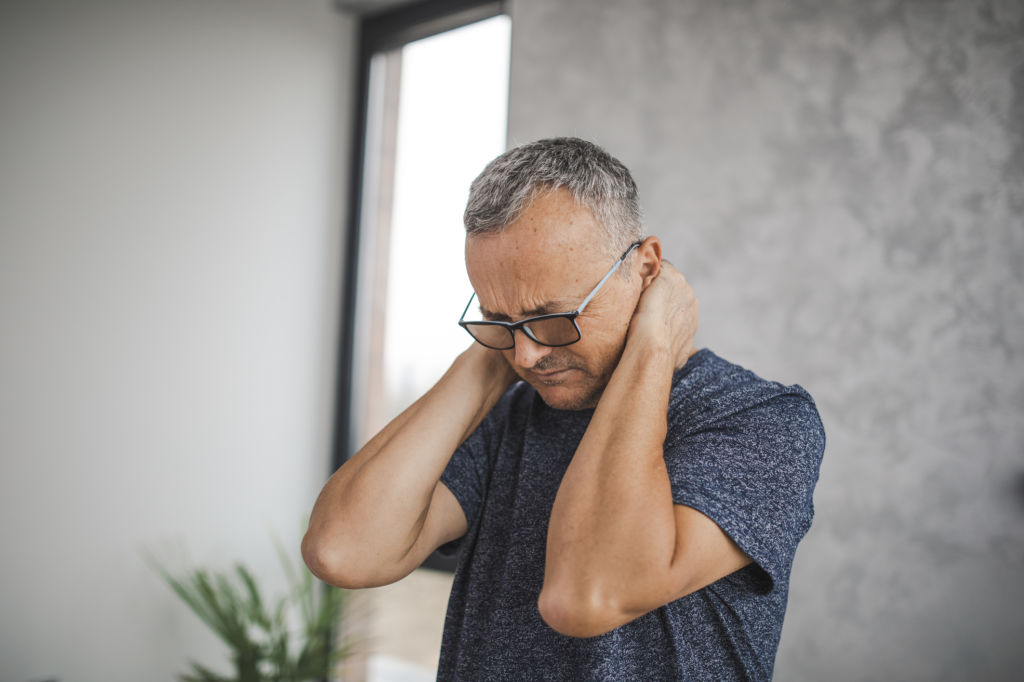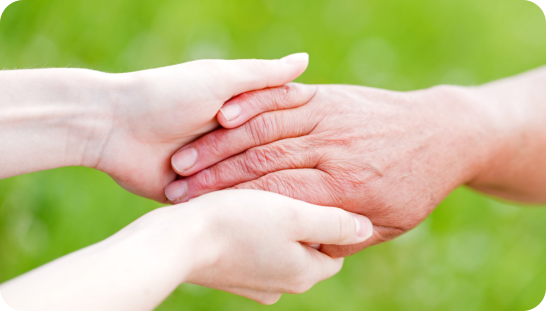7 Ways to Prevent Dowager’s Hump in Seniors

Aging is not as easy as many people think. Aging can be a complex process for all those involved, including the seniors themselves and the caregivers. But, at the end of it all, there is a potential for one characteristic to develop that can make it even more difficult for seniors to go about their everyday lives, and that is dowager’s hump.
Dowager’s hump is the non-medical term for the bulging in the neck, which appears in many people over the age of 60, particularly women. The good thing is you can help prevent this condition from progressing if you take proper action.
What is Dowager’s Hump?
Dowager’s hump (or gibbus deformity) is a forward and downward shift of the thoracic vertebrae. It is characterized by a curvature of the spine in which the upper back often arches over more than normal. The medical term for Dowager’s hump is kyphosis. It is most commonly associated with advanced age and osteoporosis, which can cause decreased bone density.
Dowager’s hump doesn’t develop overnight. It starts as a minor condition known as Buffalo Hump, a non-medical term that refers to the upper back’s small, rounded curvature. The hump is next in line, developing and expanding in size and shape to become a more prominent issue known as Dowager’s Hump.
Symptoms of Dowager’s Hump
A person may develop Dowager’s Hump if he is experiencing the following symptoms
- Muscles Fatigue
- Loss in height
- Gradual postural changes
- Pain in the neck, back, and shoulders
- Vertebral Compression Fractures
- Protruding Abdomen
- Back Stiffness
- Pain in the Hips
- No Sensation in the Chest Area
What Will happen if a Dowager’s Hump is left Untreated?
Dowager’s hump will become more severe if it is not treated, which can lead to many problems. For example, it can be painful or even cause pain when lying down. You may also experience difficulty doing everyday activities such as sitting, standing, and walking. And will feel more tired and less energetic than you used to be.
What Causes Dowager’s Hump In Seniors?
There are a lot of possible causes for an individual developing Dowager’s Hump.
1. Severe Osteoporosis

Bone density decreases as we age, which can affect posture and cause Dowager’s hump to develop. For example, if we don’t have enough bone density to support our spine and maintain proper posture, the vertebrae will bend backward to the point of protruding outwards instead.
2. Bad Posture
Having a bad posture while sitting or standing for a long time has an adverse effect on the spine’s normal curve. Over time, this can affect the shape of the upper back, which will tug on the vertebrae and eventually develop into Dowager’s hump.
3. Degenerative Disc Disease
The discs between your vertebrae are like shock absorbers that help keep your spine straight. If someone suffers from Degenerative Disc Disease, the discs might start to break down and weaken because of surgery or a physical injury. It causes the vertebrae to protrude outward and causes Dowager’s hump.
4. Vertebral Fractures
As vertebrae deteriorate, they can fracture. It causes pain that leads to bad posture, which leads to the vertebral collapse that results in Dowager’s hump forming. Seniors need to see their doctor right away if they have back pain to avoid any potential fractures.
5. Genetics
Sometimes, Dowager’s hump is just an inherited condition. However, if your parents have it, you are more likely to develop it as you age. That is why seniors need to spend their lives actively avoiding any of the causes of this condition so that they are less likely to become affected by it. One of which is frequent exercise.
7 Ways to Prevent Dowager’s Hump in Seniors
You can take preventative measures to prevent the signs and symptoms from developing or progressing even more severely.
1. Increase Calcium Intake
Osteoporosis is among the many bone-related health issues that can be prevented or treated through diet. The more calcium your elderly loved one consumes, the more bone density he will have, which means that his bones will support him effectively.
2. Healthy Diet

Healthy foods rich in calcium and vitamins will help prevent osteoporosis and dowager’s hump. In addition, this kind of diet will help prevent your loved one from feeling pain in the back, which is one of the early signs of this condition. A healthy diet will also help your senior loved one maintain a high level of energy and vitality to keep him mentally active and able to carry out his daily responsibilities.
A balanced diet consists of various healthy foods, including fruits, vegetables, meat, and low-fat dairy products. There are also some easy to prepare snacks for the elderly which you can provide to get the nutrients they need and maintain good health. These include Banana and Almond Butter Toast and Cranberry Cashew Butter Snack.
3. Be Mindful with Posture
Although it can be very difficult for seniors to learn proper posture, they must prevent or minimize any signs or symptoms associated with dowager’s hump. There are a few ways that you can help them with this.
For starters, you can help them by reminding them of the importance of good posture. In addition, you can talk to your loved one about his current posture or ask him to show you his posture. Finally, tell your elderly loved one where he thinks the problem is in his body. It helps to take the pressure off your loved one and allows him to be honest with himself about what’s bothering him.
4. Regular Exercise
As mentioned above, maintaining quality exercise programs is essential for any senior who wants to stay healthy and avoid dowager’s hump. Your loved one should be working out for at least 30 minutes every day. In addition, there are many exercises for the elderly that help prevents developing dowager’s hump; these include weight-bearing exercises and stretches.
Suppose your loved one has trouble doing any of these exercises because of his mobility limitations. In that case, you can always be his reliable elderly companion to make it easier for your loved one. In addition, regular exercise is also an excellent way to maintain a healthy body mass index (BMI) which helps prevent obesity amongst older adults.
5. Quit Smoking
Frequent smoking is a risk factor for osteoporosis, contributing to dowager’s hump. Seniors should quit smoking completely if they want to decrease the risk of developing the condition. Smoking is a preventable habit, and if your loved one can quit before osteoporosis sets in, he may be able to reduce his chances of developing dowager’s hump.
6. Minimize Alcohol
Using alcohol excessively is a common health issue amongst seniors and a risk factor for bone loss and bone fractures which may develop into dowager’s hump. Therefore, seniors need to limit their alcohol intake to prevent the symptoms from overdoing it.
7. Consider Companionship Support
If you are busy with your work or already have a family with your children, you are likely to have less time to spend with your elderly loved one. And your elders who live independently and alone may not get adequate support and needs from you.
If this is the case, you can help ensure that your loved one leads a positive and fulfilling life and prevent acquiring conditions like Dowager’s Hump by providing them with some companionship support. They will provide your elderly loved one the company they need and the attention to keep them healthy even at old age. A Home Health Care Agency like Serenity Senior Care offers a wide range of services to suit the needs of your elderly loved one, including companionship support.
In conclusion, Dowager’s hump is a common condition in the aged population, and it is an unwanted symptom associated with osteoporosis. You and your loved one can treat this condition by taking a healthy lifestyle and diet. Making sure that your loved one performs regular exercises, quit smoking, and consumes a healthy diet routine will help prevent this condition from affecting them.


